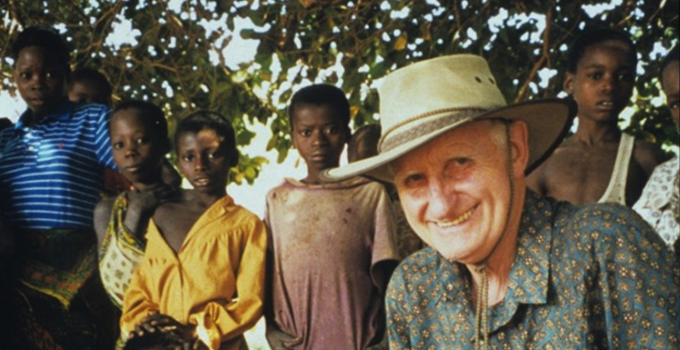James Howard Bradbury AM FRACI, 7 September 1927 – 28 November 2016

James Howard Bradbury AM FRACI
7 September 1927 – 28 November 2016
Howard Bradbury was one of the first chemistry academics to be appointed to the Australian National University in 1961. He completed his undergraduate and Masters degrees at the Melbourne Technical College and University of Melbourne and his PhD at the University of Birmingham in polymer chemistry. Subsequently, he undertook post-doctoral research at Harvard University, where he published his most cited paper on the solvent dependence of the conformation of polyglutamic acid. Upon his return to Australia in late 1954, he worked at the CSIRO Wool Research Laboratories in Geelong. At ANU, Howard carried on his research in polymer, wool and keratin research but he also expanded into investigating peptide, protein and carbohydrate structure, particularly using NMR spectroscopy.
His first sabbatical leave at Cornell University was highly influential as it led to a ground-breaking paper in 1966 that described the use of proton NMR to probe specific sites in a protein. For the first time, Howard showed that it was possible to investigate, in detail and specifically, the solution structure of a large biomolecule. It was pioneering and highly important work that kick-started the now-extensive field of protein NMR and led to his international reputation. Howard’s laboratory was also one of the early adopters of the use of lanthanide shift and relaxation agents to probe biomolecular structure and interactions. Howard’s work on biomolecular NMR was undertaken in parallel with studies on
wool, keratin and synthetic polymers. He also used NMR to investigate the structure of carbohydrates and synthetic polymers.
In the late 1970s, Howard started his research into the chemistry of foods, initially rice and then crops of the South Pacific such as taro and sweet potato. His interest in this area stemmed from witnessing extreme poverty in India in 1974, and his desire to use his skills in protein chemistry to assist in improving staple foods of the third world. The work was funded initially by the Australian Centre for International Agricultural Research (ACIAR). In 1988, he took early retirement and moved to the Department of Botany, which subsequently became incorporated into the Research School of Biology at the ANU, where he worked as an Emeritus Fellow for the next 28 years. His primary research focus during this time was developing and applying methods to test and remove cyanide from cassava, a root crop that is a major food source in tropical regions. In sub-Saharan Africa, consumption of cassava can cause cyanide poisoning, sometimes leading to death and often to the development of the disease konzo, which causes paralysis, particularly in the young. During his ‘retirement’, Howard developed kits to determine cyanide in cassava and thiocyanate in urine and a method to remove cyanogens from cassava flour. The latter is a simple wetting and drying method that drives off hydrogen cyanide from the flour. It has been successfully implemented in many villages across the Democratic Republic of Congo, saving thousands of people from the crippling effects of konzo. His research received support from ACIAR and AusAID. In September 2016, the ANU’s Day of Giving campaign raised over $85,000 towards Howard’s konzo eradication program.
Howard’s chemical research was recognised by the award of the RACI’s Rennie and H.G. Smith Memorial Medals and Fellowship and D.Sc. degrees from the University of Melbourne and ANU. He was also awarded the David Syme Research Prize from the University of Melbourne for his work on wool. In 2007, he received the inaugural ‘$2 a Day Award’ from the international Institute of Chemical Engineers for his discovery of the wetting method to treat cassava flour. In the same year, he was appointed a Member of the Order of Australia.
We were both supervised by Howard for our PhD degrees. Howard was an outstanding supervisor. He had a somewhat hands-off approach to supervision and allowed his students plenty of freedom, but at the same time, was brilliant at providing oversight and quality ideas into one’s project. Universally, Howard’s research students have had impressive careers. We have counted 10 professors from the Bradbury stable who span the disciplines of chemistry, biochemistry, biology and structural biology across the world. Others have done well in business and government and one is currently Australia’s Ambassador to Austria.
Howard was a man of great intellect, integrity, enthusiasm, fortitude, charm, wit and good will. He was also a humanitarian. His admirable ideals and principles stemmed from his strong Christian faith and his desire to help others less fortunate than himself. Howard was a strong family man who was lovingly supported throughout his career by his wife of 64 years, Ruth. We shall miss his softly spoken voice, his broad smile, his great sense of humour, his sound advice and mentorship and his enthusiastic descriptions of everything, particularly of his family. Howard is survived by his wife Ruth, their three daughters, Joanne, Annette and Meredith, nine grandchildren and 21 great-grandchildren.
John Carver, ANU
Ray Norton, Monash University
